
URBAN SPACE 2 Mumuleanu 14 Housing
 Shortlisted at EU MIES van der Rohe Award, Barcelona, 2022
Shortlisted at EU MIES van der Rohe Award, Barcelona, 2022
 Nominated at the Collective Places category at the biennial Living Places – Simon Architecture Prize, 2022
Nominated at the Collective Places category at the biennial Living Places – Simon Architecture Prize, 2022
Client: Urban Spaces
Project duration: 2014-2019
Gross area: 3.450 m²
Bucharest, Romania

As in some Bucharest courtyards where houses that share a common yard are attached one to another, seven larger homes are placed along a deep courtyard with a broken, imprecise contour, opened less to the street and more to that obscure core which hides very often among the streets of the city.
Concept![]()

The project is built on Barbu Mumuleanu street at no 14, a long, narrow, and twisted plot. The proposal consists of the successive placement along with the site, from South to North, of 7 houses-like volumes, a community of 20 unique apartments. The building's imprecise outline opens less towards the street, and more towards the deep and diffused core which is often hidden between Bucharest’s old streets. The elongated volume stretches from the street to the (deep) back of the site and stays connected to the street through an access courtyard that runs along the site's western boundary. On the plot’s eastern side, the long and irregular strip of land is split into a sequence of private gardens.
Between these two narrow gardens are therefore placed all the dwellings and their rooms, opening their doors and windows to both, receiving inside both the morning and the afternoon sun, each of them searching for its own proper space, orientation, and proximity. The access points' careful customization and the units' double orientation are borrowed from the characteristics of the wagon-type dwelling, a typical housing pattern in Bucharest's old central neighborhoods. The "wagon house" typology has been an important reference for the project. Thus, on the ground floor duplex apartments are entered directly from the common garden, like a series of maisonettes. On the second floor, an external corridor runs along with the whole building, replicating the ground floor common garden’s appearance and aiming to become a genuine "alley" or elevated garden, through which all apartments from the 2nd and 3rd floor are accessed. Not only the communal western garden but also the small private gardens on the east are replicated above, by the means of some winter gardens - loggias with movable glass enclosures - which allow for all apartments, down on the ground or above, to enjoy the same spatial sequence.
The project thus tries to work with typological criteria and aims to respect and complete the neighborhood’s character, by attaching and overlapping dwellings with distinct, private entrances, with porches, gardens, terraces, or just open niches to the front west side garden, or to the intimate east side (back) garden.
Along with the searches for a typological specificity, the connection to the neighborhood's scale consisted also in fragmenting the building's mass in volumes with different heights. This was done as an attempt to connect the new building to the old ones and protect the urban fabric, while also allowing the light to pass through towards the neighbor.
At the same time, the project has searched to reclaim the plaster as a simple, yet beautiful façade material and technique. A very common and rich technique in Bucharest’s older architecture, it has recently almost disappeared, in a period when the whole city is being arbitrarily clad in colorful polystyrene. The plastering was applied and finished manually - all small errors were left visible, precisely because they enhance the beauty of the material. We believe that such "syncopes" complete the whole design’s expressiveness and may recover some of the "handcraft" techniques' lost qualities.
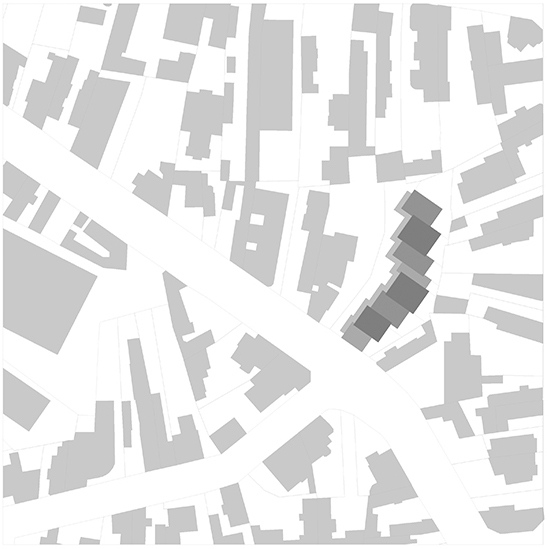



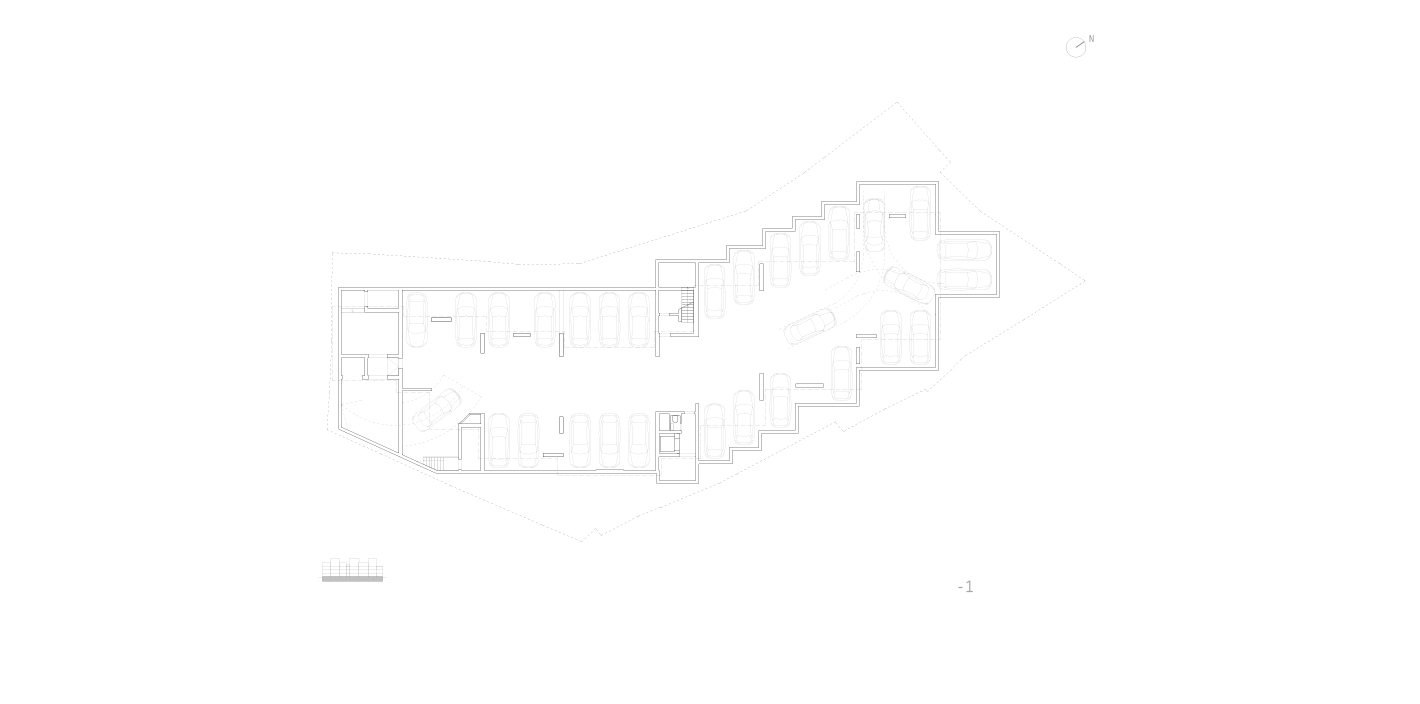
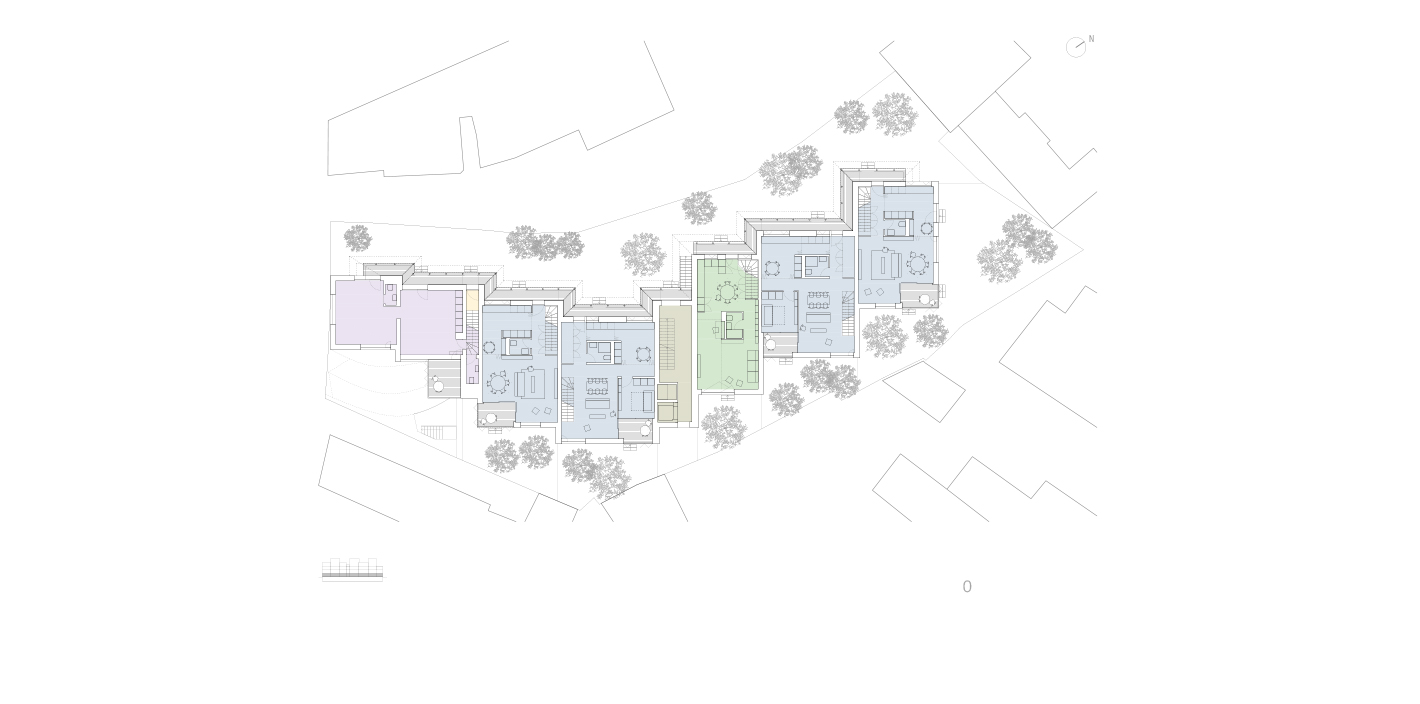
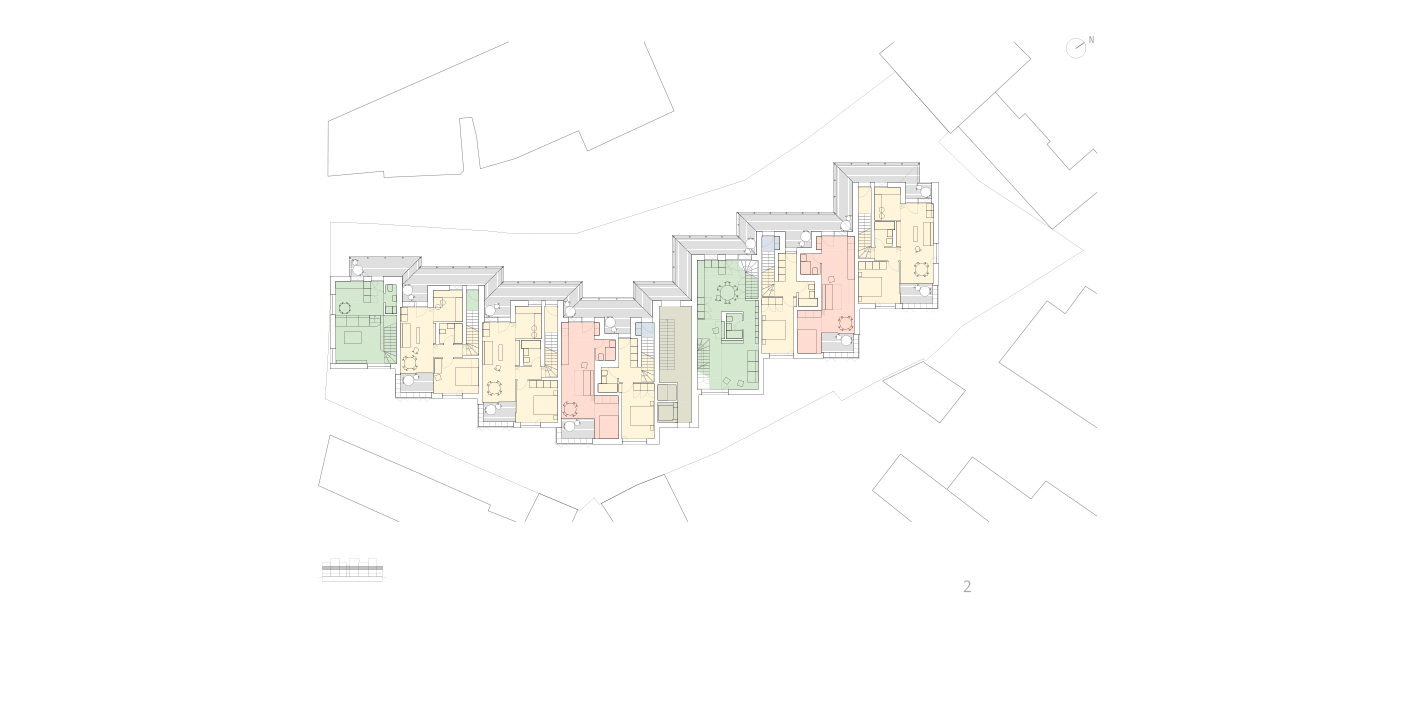
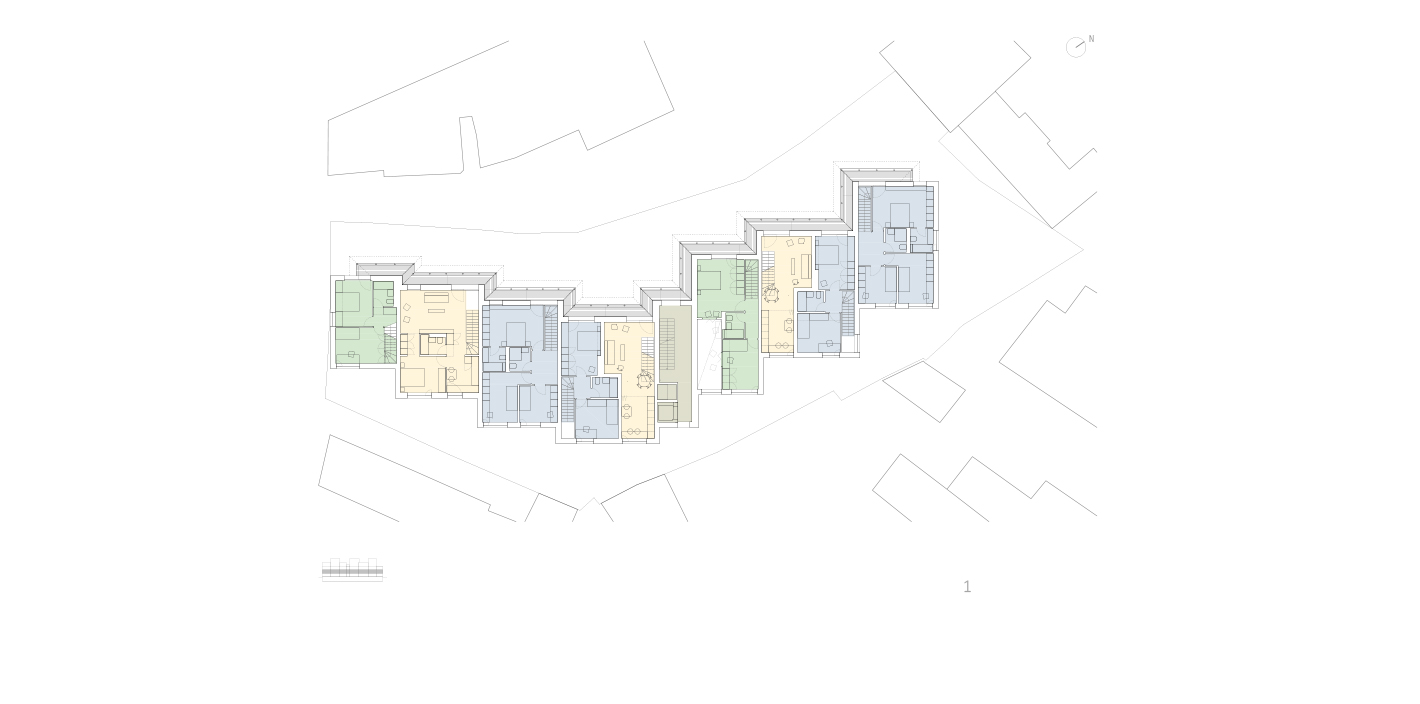
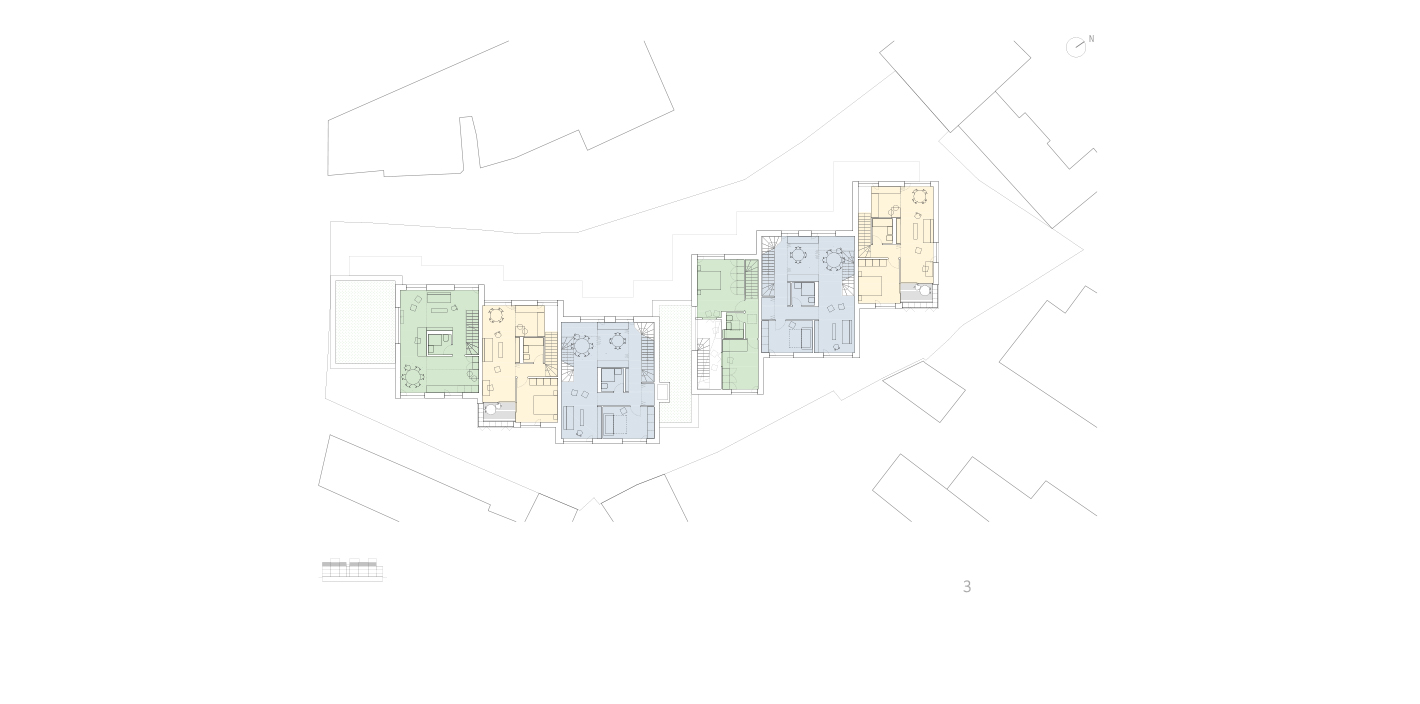



Furthermore, these houses contain within other houses which are overlapped and adjacent, with distinct entrances, porches, gardens and terraces or just niches towards either the western front entrance courtyard or the more intimate eastern courtyard to the back. In between these two narrow courtyards lay all the dwellings with private spaces connected to both of them, which allow the morning and afternoon sunlight to reach in through their open doors and windows, thus, each home becomes accustomed to its orientation and vicinity. Probably, the future residents will get acquainted with each other in a similar manner.


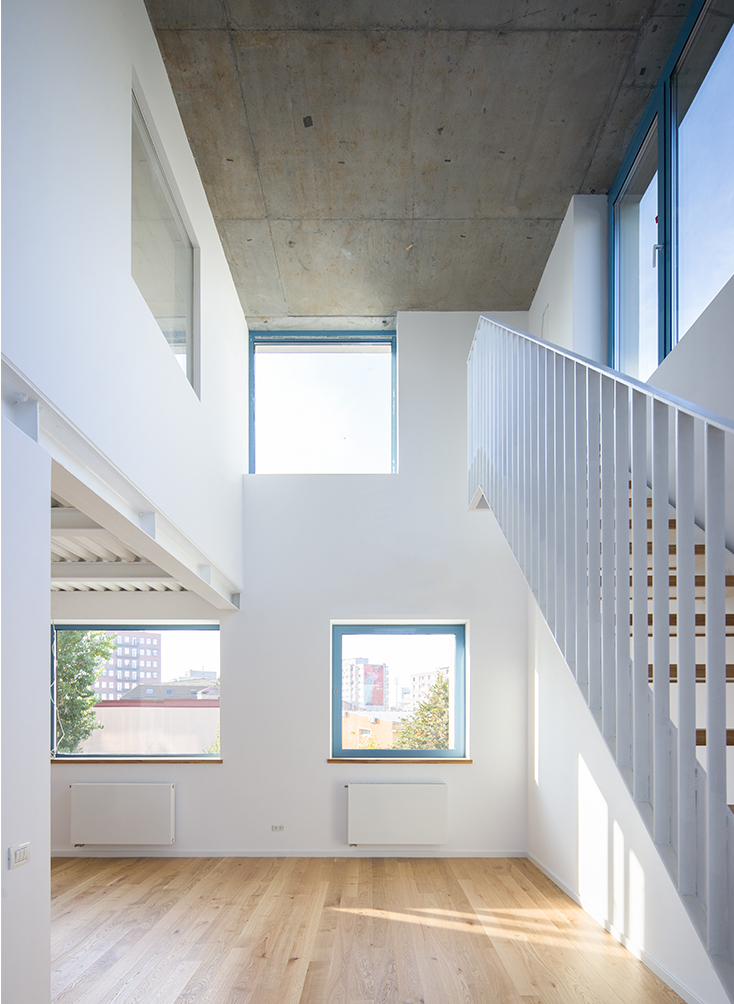


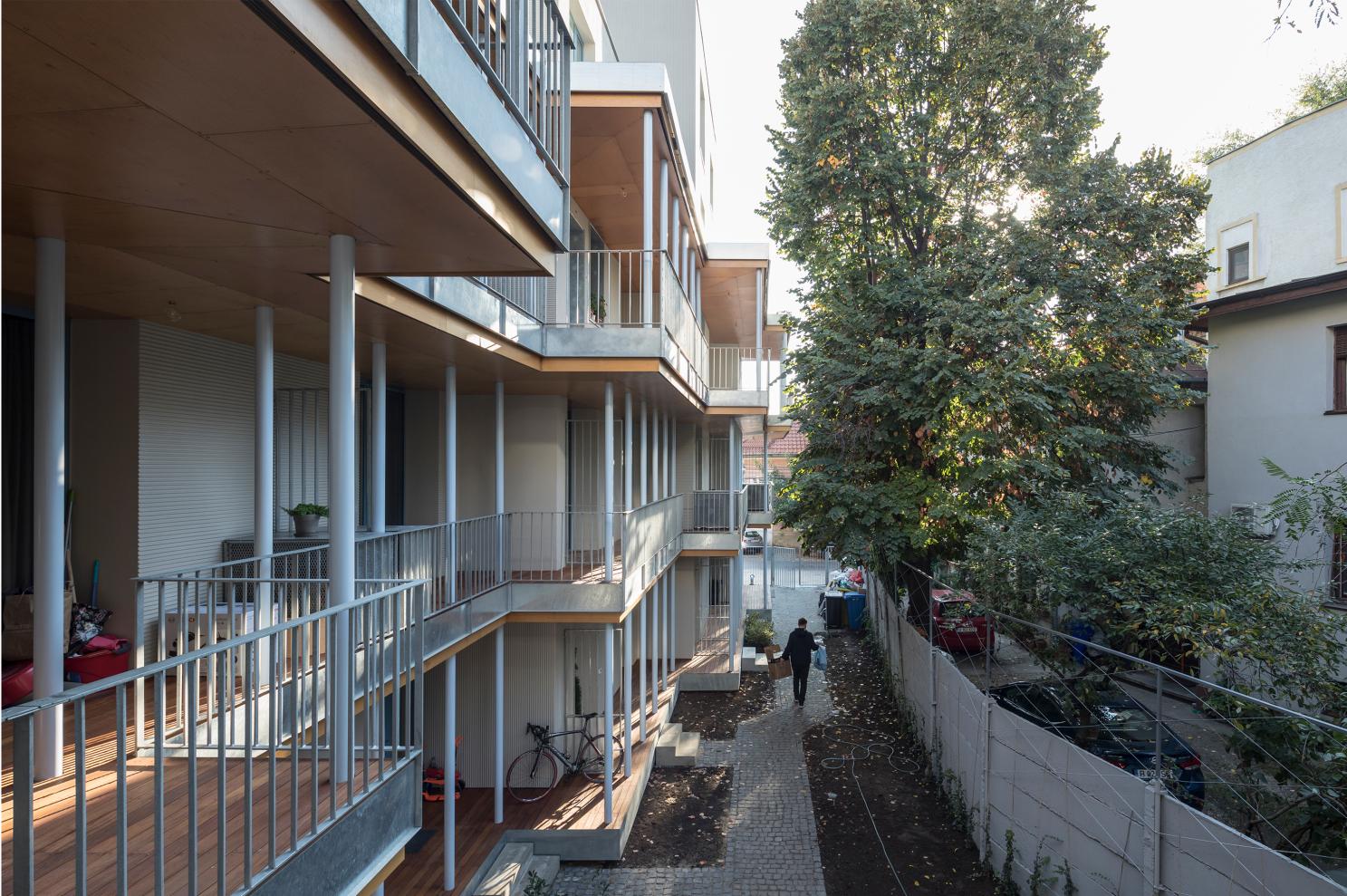
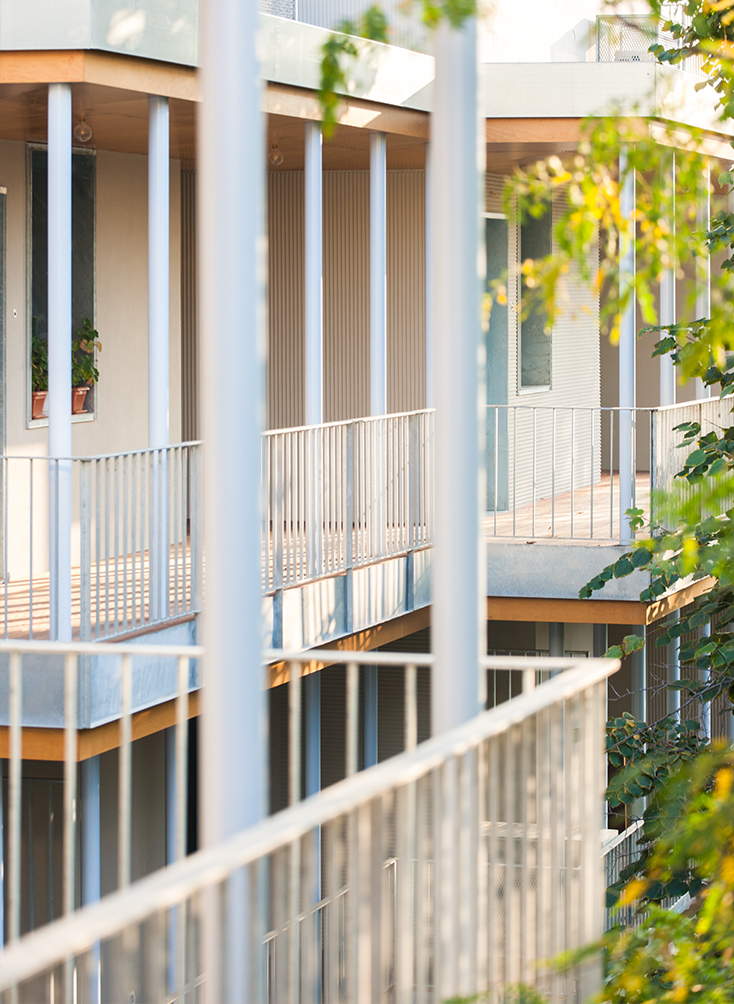


Matrix of unit types![]()

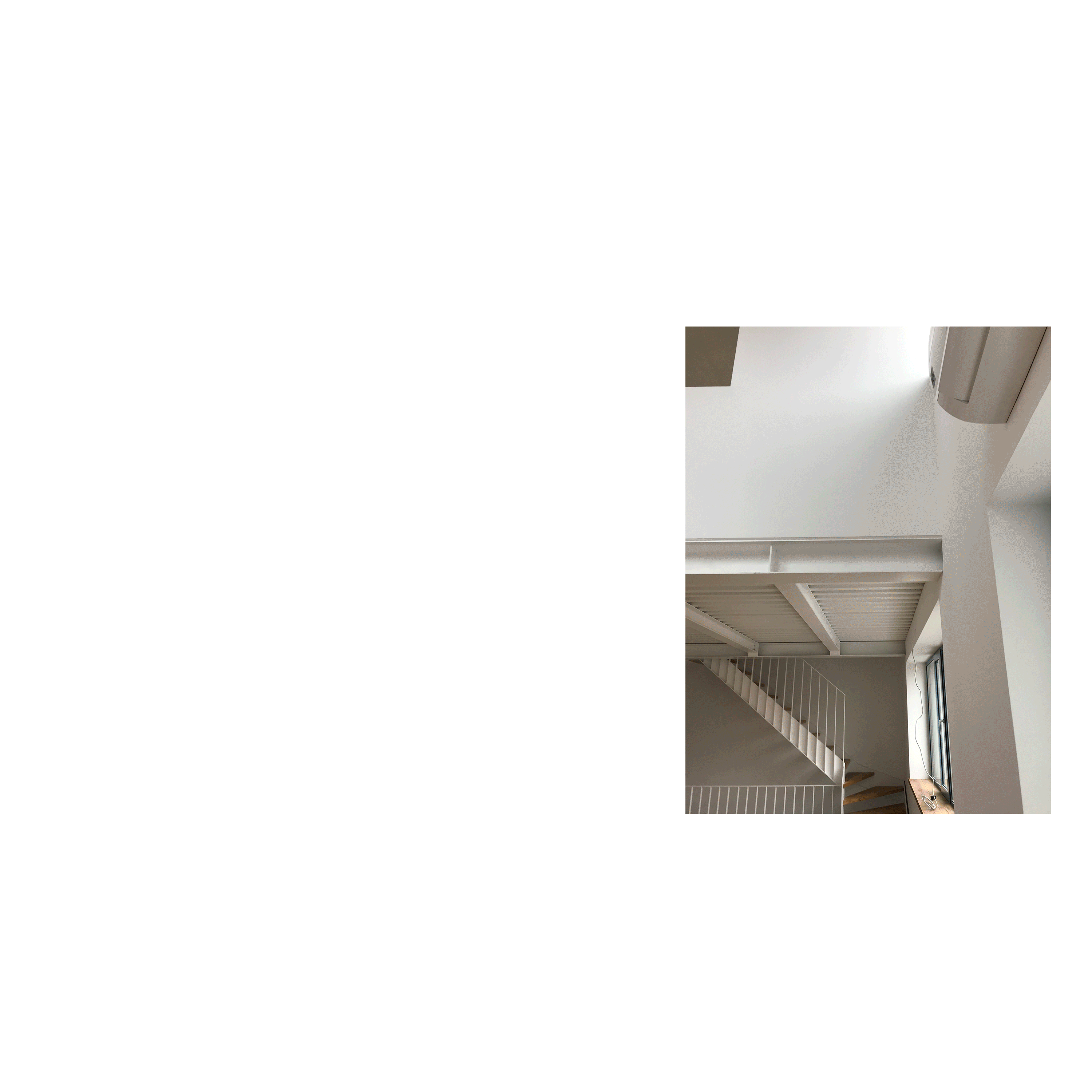
Project Team:
Architects
Andrei Șerbescu
Adrian Untaru
Petra Bodea
Bogdan Brădățeanu
Mihail Filipenco
Photographer
© Laurian Ghinițoiu
© Andrei Mărgulescu
© Daniel Miroțoi
© Mihai Rotaru
Architects
Andrei Șerbescu
Adrian Untaru
Petra Bodea
Bogdan Brădățeanu
Mihail Filipenco
Photographer
© Laurian Ghinițoiu
© Andrei Mărgulescu
© Daniel Miroțoi
© Mihai Rotaru
Copyright © adnba 2003-2025 | Terms and Conditions
Facebook, Instagram, LinkedIn
